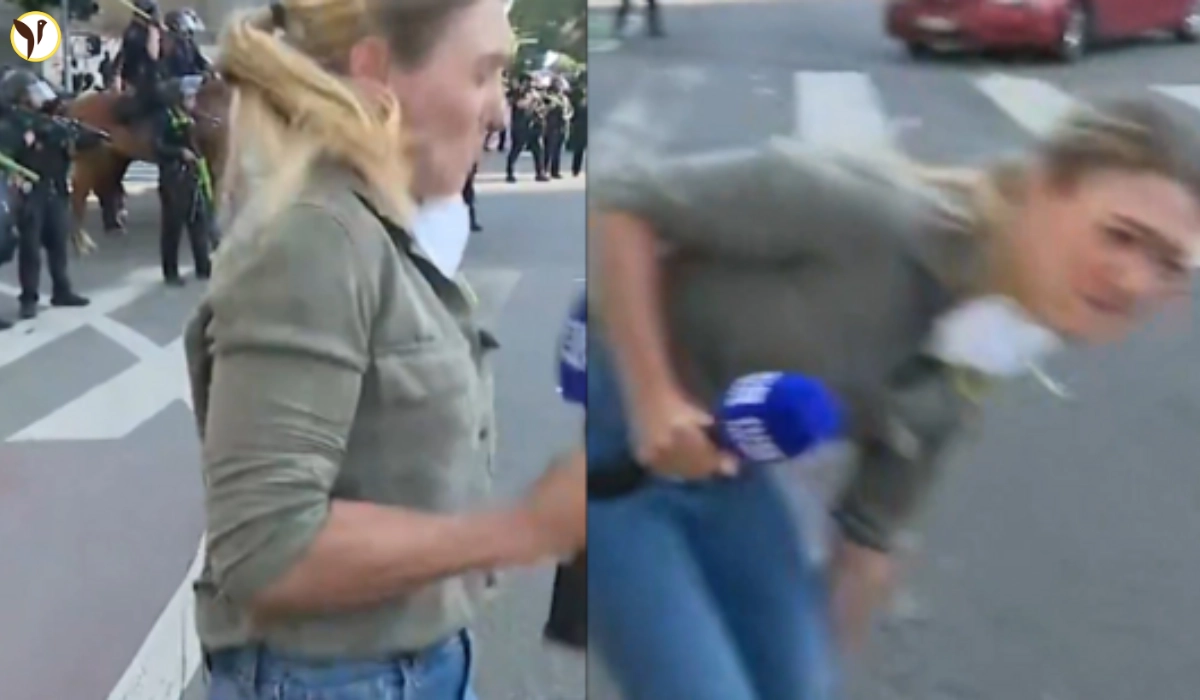Lauren Tomasi, an Australian journalist working for Nine News, was recently injured while reporting on a public protest in downtown Los Angeles. The demonstration was being held outside the Metropolitan Detention Center and was focused on opposing immigration raids. Things turned chaotic when law enforcement officers tried to disperse the crowd using rubber bullets and mounted patrols. While standing with other reporters in a clearly marked media area, Tomasi was hit in the leg by one of these rubber bullets. She reacted calmly and quickly confirmed that she was okay, saying she was “all good” despite the shock. This incident is another reminder of how dangerous it can be for journalists working on the ground during unrest.
Response from Nine News and the Australian Public
After the news broke that Lauren Tomasi had been struck during live coverage, Nine News responded by confirming that both she and her cameraman were safe and had not sustained serious injuries. The network expressed its concern about the increasing risks faced by journalists, especially those covering protests and civil disturbances. Public reaction in Australia was swift, with many expressing shock and disappointment that a clearly identified journalist could be hurt during a peaceful reporting assignment. It led to widespread discussion about the role of the media and how vulnerable reporters can be when covering tense public events. Support for Tomasi came from fellow journalists, politicians, and viewers across the country.
Political Reactions and Calls for Greater Protections
One of the most vocal responses came from Senator Sarah Hanson-Young, who condemned the shooting and urged Australia’s Prime Minister to raise the issue directly with American authorities. She said that no journalist should ever be harmed simply for doing their job and called on leaders to stand up for press freedom. Her remarks sparked a wider political conversation about how countries like Australia can protect their citizens abroad, especially when they are involved in public service roles like journalism. It also raised questions about international standards for police conduct when dealing with protests and whether better training is needed to recognize and protect members of the media during tense situations.
What the LAPD Said After the Incident
The Los Angeles Police Department later released a general statement explaining that the protest area had been declared an “unlawful assembly.” According to their guidelines, this allowed officers to take steps to clear the area, including the use of rubber bullets and mounted patrol units. They advised media to stay a safe distance away once that declaration was made. However, many people, including other journalists, argue that Tomasi was clearly working in a professional capacity and should not have been in harm’s way. So far, there has been no public apology or specific follow-up from the LAPD regarding Tomasi’s injury, which has led to continued concern and criticism from media watchdogs.
The Bigger Picture: Risks Journalists Face Today
Lauren Tomasi’s experience is part of a larger pattern where journalists are being injured or harassed while covering public events. From protests and rallies to war zones and disaster areas, reporters are often on the frontlines and take real risks to keep the public informed. Many of them are wearing clear press identification and still end up in dangerous situations. Rubber bullets, though considered less deadly than live ammunition, can still cause serious harm, especially if they hit sensitive areas like the head or chest. This situation has sparked calls from news organizations and advocacy groups to improve protections for journalists and raise awareness about the challenges they face.
Image Source: Hindustan Times









